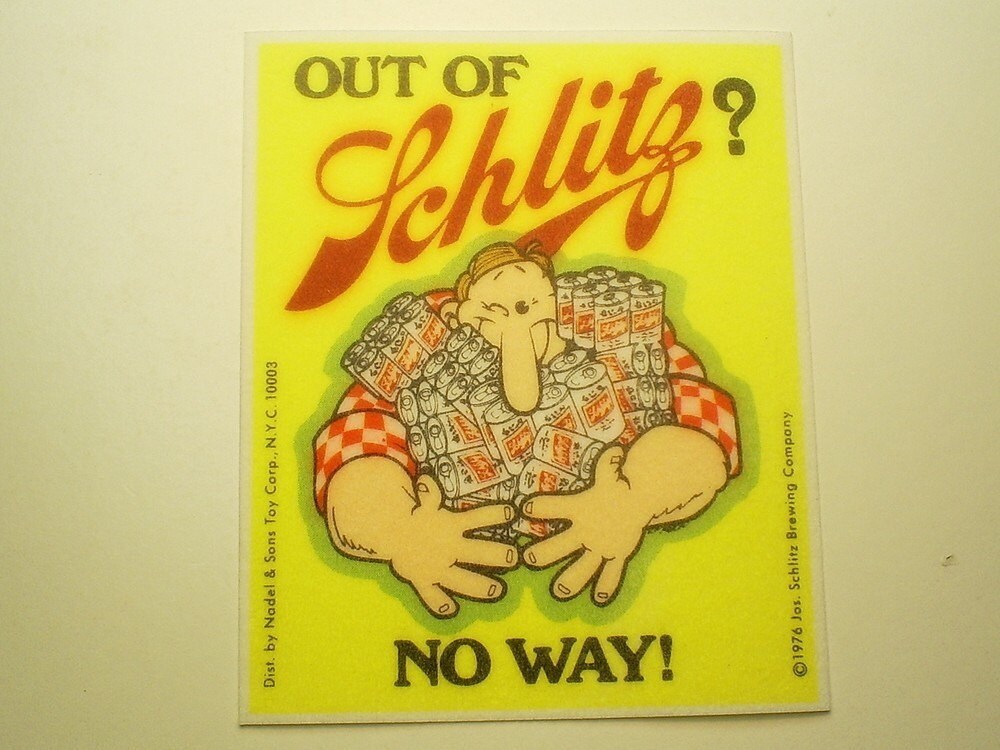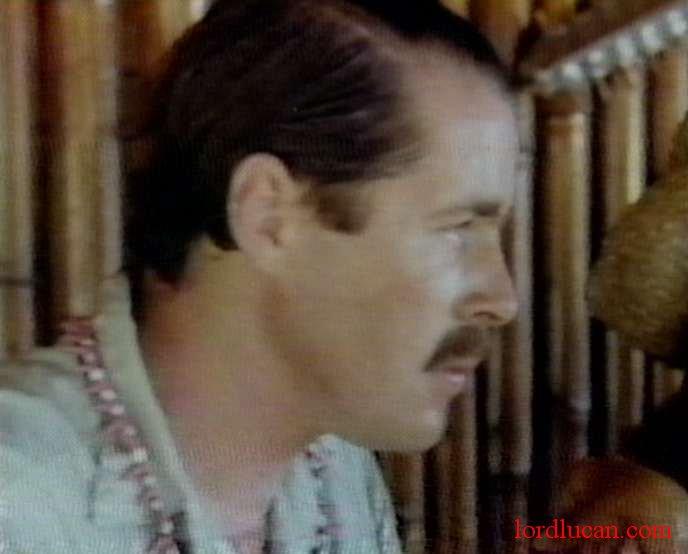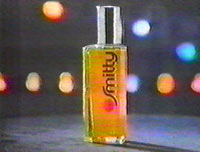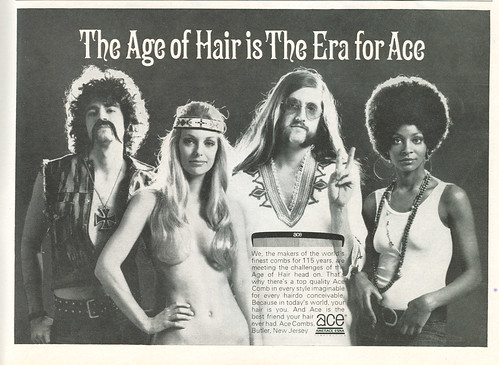10. Pan-Am and TWA
Although these two airlines did start way back in the 30s and did continue beyond the 70s into the 90s, there's something classically 70s about Pan Am and TWA that's hard to pin down. Maybe it's the funky logos and typefaces they used. Pan Am had a reputation of being a pretty classy airline, which is why I'm including the magazine ad about first class down below. Notice the ridiculous amount of text you got in ads back then?
Pan Am's other famous tagline was "If you do not master your aircraft, your aircraft becomes your master".
Anyway, I was in a thrift store last weekend and came >< this close to purchasing an old TWA vinyl holiday bag in red and white. Although it would have made for a cool retro messenger bag, I had to remind myself that it was TWA, after all, and reminded me of Thomas Cook holiday catalogues. Brrr! Sent a chill down my back, I can tell you.
In the 70s, the term "widebody" was reserved for the aircraft, rather than passengers from Topeka.
TWA Commercial from the 70s, featuring Peter Sellers
Oh, hey, and this is the exact bag I found in the thrift store...
You may now realize why I didn't want to spend $30 on it.
Related: DC-10 Crashes
"Look, ma, no engine!"
Yes, I know I shouldn't joke about them, but it was hard not to. To start with, the cargo doors had a habit of blowing off the plane in mid-air, causing them to decompress and fall out of the sky. So they fixed the problem and went back into service, only for the engine to fall off of the DC-10 you see above at Chicago's O'Hare Airport. For a long time, as a kid, whenever we saw a plane flying over our school, we'd assume the worse and run for cover, just in case it was a DC-10. Since then, I've flown on a couple of DC-10's and they're not bad little planes. I just tend to pray more whenever I board one...
9. Leisure Suits
Luckily, I wore some weird crap when I was young, but no one bought me one of these. I was a shorts and t-shirts kinda kid, preferably tennis-related, and I could make a pair of Converse Chuck Taylors last forever. I'd have hated being stuck in any kind of suit back then, let alone one made with 100% polyester, but now... hey why not? They're color coordinated, no need to iron, and you look like a guy who's ready to safari. How can you beat that?
Rather typically, Adam couldn't find a seat in the cafeteria because the German tourists had claimed them all already by 6am.
Related: Iron-On Patches
These guys made it into the 80s with the rise of the denim jacket and metal band, but they were at their best and weirdest in the 70s. Why on earth would anyone buy an article of clothing, then buy a patch which is not much more than an advert for a product, then spend the time ironing them onto said article of clothing? Because jeans are expensive and you've worn a hole in the knees, of course!
Having said that, not sure if my mum would have given me one of these to put on my knees. Not until I was 10, anyway.
You can never have enough Schlitz on your jeans.
Related: Crimplene
I really shouldn't have to say too much about this stuff. Yet another non-iron man-made polyester blend that neither breathed nor fitted properly. The dress below is 100% crimplene, and makes even a headless mannequin look like a sweaty Stay-Pressed Cruella DeVille. However, because of its memory plastic nature, you could roll it up, throw it in a TWA Vacation Getaway bag, fly to DC, take it out and throw it on and still look great in time for the Ambassador's Party. Just stay away from naked flames, or hairy waiters serving Ferrero Roche.
Everybody run, Joan Crawford's ghost is coming for you...
8. Datsuns
I honestly miss Datsuns. There was something of the Ford Capri to them. Long noses and lean muscular racing lines, and cool, cool colors. When Nissan killed the brand in the 80s I was so disappointed. Don't forget, I had a couple of Datsuns in my Matchbox Super 75 collection, but I never had any Nissans, no sirree. So, yeah, bring back the Datsun.
Believe it or not, the 610 really was the most luxurious Datsun.
Plus, they had a logo that looks just like a London Underground station.
7. LED Digital Watches
LED watches came out just before the more comonly known LCD watches which is what we would conceive of as a digital watch today. But LED watches were way cooler. For a start, they required more power than an LCD watch, which meant that, in order to find out what time it was, not only did you have to look at your watch, you had to find a big silver button on the side and press that in until you had a dent in your finger to make the LEDs light up. Some of them had a calendar, too, but by then, your finger's got a hole in it, and you're using an ice lolly stick to bridge the gap and hey, it's not worth the trouble, man.
Despite that, all you could think about was that you had a watch that looked like it belonged on an astronaut, and who wouldn't want that?
Someone actually thought it would be a good advertisement to show this watch not telling the time.
6. People On The Moon
Speaking of astronauts, remember when they didn't just go up in space, float about a bit then come back down again? That's right, we actually sent them places. What's crazier is that we sent them to the moon using computers that have been eclipsed in power and memory by my old Motorola Razr. That's some pretty heavy stuff right there, dude.
Apollo 17 Astronaut re-enacts scenes from "Dude, Where's My Car?"
Related: SkyLab
This thing was about the size of a Lower East Side studio apartment, yet three people at a time lived and worked in it 24 hours a day 7 days a week for months. Sure the Soyuz cosmonauts had it bad, but think about the smell. It's not like you can just open a window or anything. International Space Station? Luxury! On the plus side, you were closer to home than the crazy guys on the moon. Bad side? When everyone left it, they just waited for it to fall out of the sky. If that was its main purpose in life, you might as well saved all those tax-payer dollars and thrown a DC-10 up there instead.
Ceci n'est pas une pipe.
5. Jimmy Hoffa
Okay, I don't miss him. But he is missing. Still. Rumor has it that I ride over him on the train every morning on the way to work.
Giants Stadium Stairwell Foundation, East Rutherford, NJ: Self-portrait.
Related: Lord Lucan
This guy, however, I do miss, because I grew up on the stories of his disappearance and there were constant sightings of him appearing in the papers all through the 70s and early 80s. Lord Lucan killed his children's nanny with the lead pipe in the basement, and tried to kill his wife, too, before she escaped and called for help. When the police searhed the house he was not there, and has never been found since. Rumor has it that he fled to Rhodesia and changed his name to Ian Smith.
"Oui, oui, je suis une porn star."
4. A world without home computers
I know, I know. Without this thing I wouldn't be able to write this, you wouldn't be able to read it, and Google Analytics wouldn't keep making me cry by telling me I have no hits. No matter, I'm not sorry. I really would prefer a world without email, Blackberrys, internet porn, first person shooters and worst of all, national databases. So, that begs the question... What did we do without home computers?
Instead of Word Processors we had Typing Pools
The device below is called a typewriter. A police officer in 2008 found one of these in a carrying case at the bottom of a set of stairs and called in the bomb squad to blow it up, because he'd never seen one before. Then again, this was in Florida, so no big surprise there.
Typists in the 70s were trained in school, and probably wouldn't be able to get a job unless they touch-typed at an average of 70-plus words per minute. 90 WPM was more common. Sometimes a typist would have to take a dictation, either live, or from a cassette, and would use either a weird squiggly language called 'short-hand' or type as fast as the person was speaking. In teh 70s, if you were a short-hand or audio typist, with a 90WPM speed, you'd get pretty far in your typing pool.
Mildred always lost the Friday afternoon 'staring slightly to the right' competitions.
Ever wonder what the CC stands for in an email? It means Carbon Copy. That was a sheet of carbon paper that went between sheets of regular paper that would print on the second sheet as you typed. You could make about 4 copies of anything at any one time using that stuff. After that, the hammers of the typewriter wouldn't be strong enough to go through all that paper. Carbon paper was a great time-saver, but you never really wanted to touch it, as it would invariably go all over your hand, and then everyone would know who strangled their boss last Friday.
Telex
Your average business card in 2008 contains your phone number and your email address. In the 70s it would be your phone number and your Telex number. Fax machines existed, but they were extremely poor quality. Much better to type out your message or letter again and then send it via telex. Or, even better, by mail. If the postmen weren't on strike, that is.
Sure, for 1978 this was a pretty cool laptop, but it was a bugger trying to fit into my messenger bag.
TeleType Machines
If you listen to radio news, you'll hear one of these clacking away in the background. Well, at least a looped audio file of one, anyway. My main memory of these is the British TV Sports show, Grandstand. After 4.30pm every Saturday, the football results would start coming in, and rather than just telling us what they were, they'd actually cut to the teletype machine as it was receiving them and a man with the most BBC English voice you'ev ever heard would read them out. We all waited with baited breath for the Scottish results to come in, though, as we all longed for him to announce "Forfar 5, East Fife 4", but I don't think it ever happened.
The new Terminator could take any shape or form, once it had touched it.
Related: A world where political scandals ended in something other than '-gate'.
3. Smitty
The "Smitty Did It" ad campaign was huge back in the mid-70s. Somehow, just the knowledge that you were wearing it was enough to reverse gravity. I mostly miss this, though for one reason, as no one I knew actually wore the stuff (they all used Charlie)... My sister used to pick me and swing me around while I sang the jingle.
Weird memories tend to land on my head like that.
Smitty: Anti-gravity juice for ladies.
Here's a link to the commercial. Hopefully it works as I can't test it here.
Related: Harmony Hairspray
Is she or isn't she, the commercial used to ask us. And of course, she was, but only until the invention of mousse.
2. Beverage Pull Tabs
For years we were given cans that had pull tabs that came completely off, rather than the ones we have today that scrunch metal into your drink before you get a chance to drink it. Pull tabs were great when they worked, but they had two problems. Firstly, sometimes the ring section would break off, leaving the can completely unopenable, except with a stick.
Each can came embossed with two easily ignorable sentences.
Secondly, the streets were littered with these things:
Mostly, they were squashed by cars or bikes. There are some sections of road in London still where you can see them, flattened and embedded into the asphalt as though they were part of the mixture. Archaeologists in thousadns of years time will dig up those roads wondering why we placed them there, and they'll never know. They'll never know.
Related: Watney's Party Seven
Because a party ain't a party until someone brings a couple of sevens with them. This is just a seven pint can of cheap crap ale. It wasn't a keg, because it didn't have a tap, you just poked a hole in it and poured.
Ta-daa! Instant party!
1. Chicken In A Basket
Before my dad had his Triumph Dolomite, we had a Morris 1300. Where we lived in London, the spot behind my dad's car was taken up by an orange Reliant Robin that was used as a Chicken-In-A-Basket delivery van. To this day, I know that CIAB was supposed to be classy, if you were working class council flat kids like me, but for the life of me I don't know why. It's not chicken cordon bleu, it's not not even chicken kiev, it's just chicken. And it's not even on a plate.
Still felt posh, though...
It's chicken. And it's in a basket.
Related: Black Forest Gateau
Layers of cream, sponge, strawberries, chocolate. It fell out of favor with the introduction of the Wall's Viennetta, but you'd still never turn down a slice of this yumness.
Om-nom-nom!































